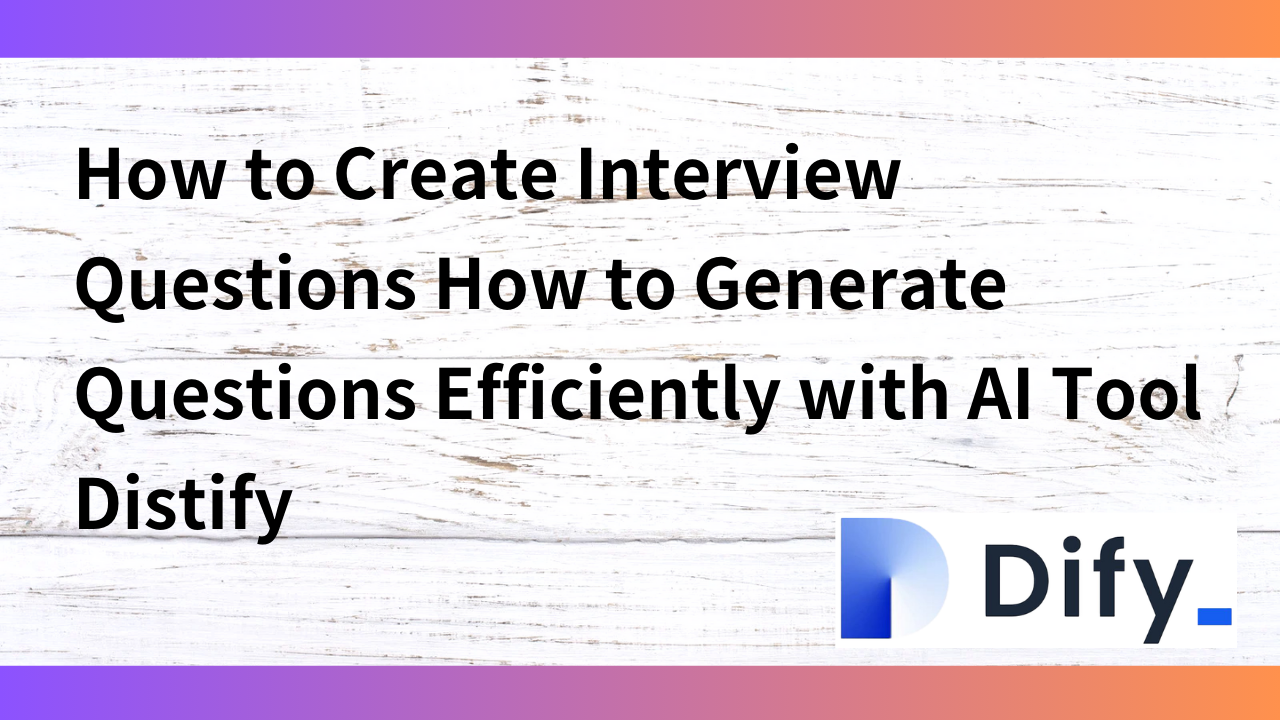Introduction.
Interviews are an important method for eliciting deep insights and valuable information from others. However, preparation is essential to creating effective questions. This article explains the basic steps for creating interview questions and provides specific examples of how to efficiently generate questions using the AI tool “Didify.
By reading this article, you will learn how to systematically craft questions to meet interview objectives and increase accuracy while saving time.
How to create basic interview questions
1. clarify the purpose of the interview
First, it is important to clarify the purpose of the interview. If the purpose is unclear, questions will be scattered and may not elicit the necessary information.
- For example: want to know what customers think about a new product, want to hear market trends from industry experts, etc.
2. investigate the background of the subject
Research the interviewee’s background and areas of expertise, and prepare relevant questions based on that research. This allows us to construct questions that are easy for them to answer.
- E.g., “What are some of the most memorable successes of your past project experiences?”
3. devise the types of questions
- Open questions: used to gain deeper insights (e.g., “What are the biggest challenges facing your industry today?”) Open Question.
- Closed question: used when you want a clear answer (e.g., “Do you have any experience using this software?”) Closed Question.
4. utilize the 6W2H method
Questions are constructed using a “Who”, “What”, “When”, “Where”, “Why”, and “How” framework. This allows us to elicit specific and broad answers.
Specific examples of creating questions using Dify
1. basic features of Dify
Dify is a no-code AI app development platform. Questions can be generated efficiently by setting prompts, leveraging variables, and adding context.
- Feature:
- The RAG (Retrieval-Augmented Generation) function automatically generates questions based on past data and documents.
- Extract the necessary information from web pages and documents, and create questions based on that information.
- Intuitive interface, no programming required.
2. creating questions using the RAG function
Using the RAG feature of Dify, questions can be created through the following process:
- Example:
- Enter a user-specified URL (e.g., industry report or news article).
- Extract relevant information.
- What questions should I ask if I were to conduct an interview based on this report?” prompt.
- Dify generates the following question:
- What are some of the current market trends that we should be paying attention to?”
- What is the competitive landscape on this topic?”
3. integration with external tools
Dify can be integrated with other tools (Google Sheets, Slack, Notion, etc.) to automatically capture the latest industry information and create questions that reflect trends.
- Example: Automatically generate new questions by leveraging past interview data stored in Google Sheets.
Use of template functions
The AI front-end interview template from Dify can be used to efficiently create questions such as
- Example of a question generated based on a specific URL:
- What is the main challenge this service solves?”
- What are the tangible benefits to our target users?”
In fact, one of the templates in Dify is the “AI Front-end interviewer,” which allows you to enter an interviewee’s name and it will search the web based on that name and generate multiple interview questions based on past interviews and background information. The template generates multiple interview questions based on past interview articles and biographies.

Transcribing audio into articles using interview AI
Once the interview questions have been developed using the above methods and the actual interviews have been conducted, it will be necessary to turn them into articles.
Interview AI transcribes an hour of audio in just 15 seconds and automatically converts it into a natural interview format. It also automatically creates summaries, titles, and subheadings, so you can complete your interview transcription with this tool.
summary
To effectively create interview questions, it is important to clarify objectives, research the target audience, and structure the questions. In addition, utilizing an AI tool such as Dify can streamline the process of question creation and prepare more accurate questions.
As a next step, try Distify. It will improve the quality of your interviews and save you a lot of time. We especially recommend using it for industry research, customer support, and HR interviews!


